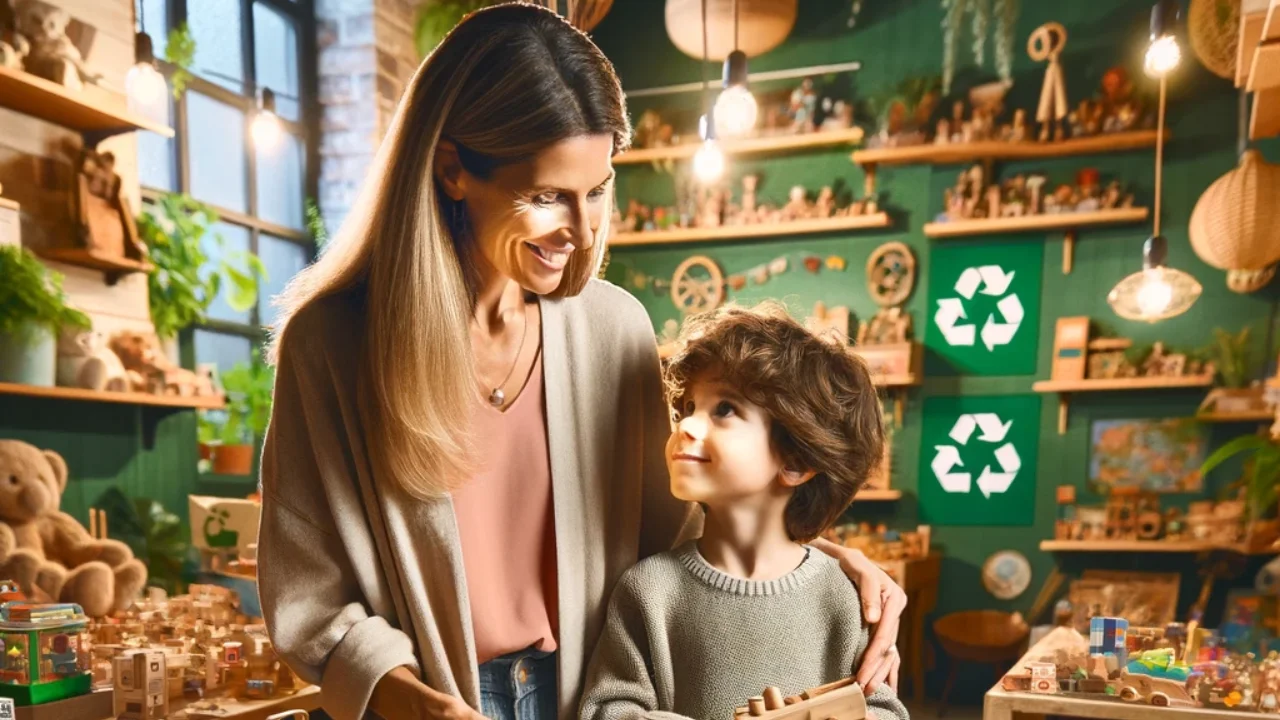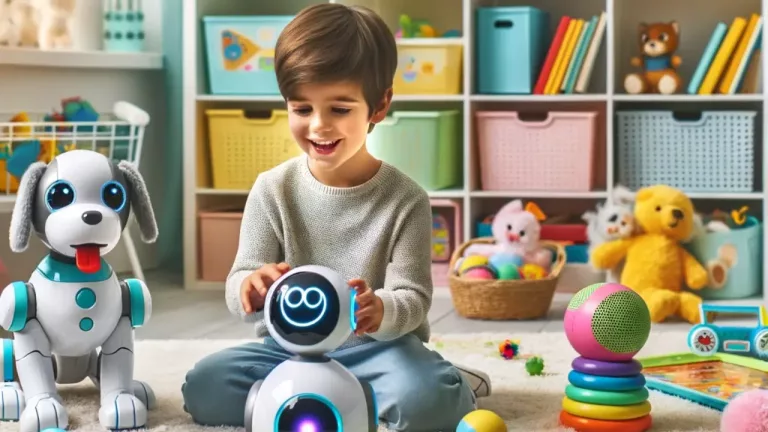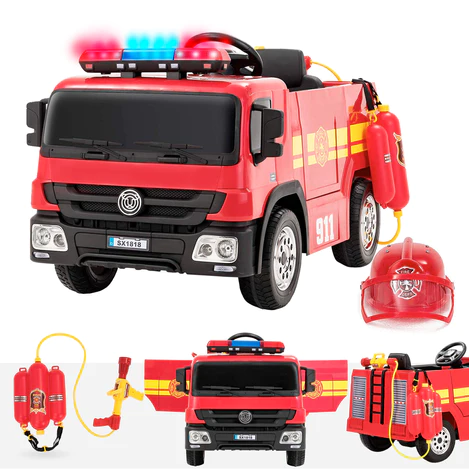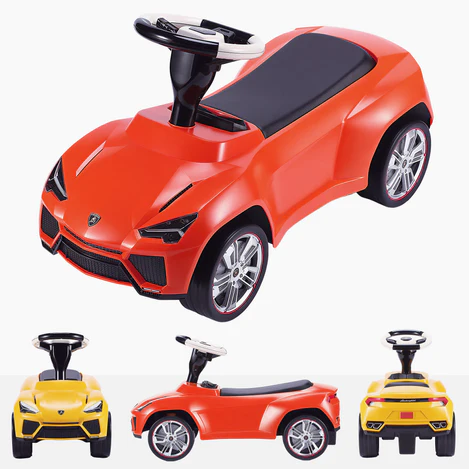As environmentally conscious parents, we’re always looking for ways to teach our children about sustainability and responsible living.
With the rise of eco-awareness, one aspect that often gets overlooked is toy shopping.
The shift towards second-hand finds is not just a trend; it’s a necessary step towards a more sustainable future.
This article delves into the world of eco-friendly toy shopping, highlighting its benefits, safety considerations, and how we can make responsible choices for our children and the planet.
Table of Contents
ToggleBenefits of Buying Used Toys
Cost-Effective Alternative
Opting for second-hand toys is undeniably kinder to your wallet.
But it’s not just about saving money; it’s about valuing resources.
By choosing used toys, we’re reducing the demand for new products, which in turn decreases overall production and its associated environmental impact.
Environmental Impact
Every new toy made uses resources and energy.
When we choose second-hand toys, we directly contribute to reducing this usage.
It’s a simple yet effective way to make a positive environmental impact.
Preserving Landfill Space
By giving toys a second life, we’re not just preserving landfill space; we’re also upholding the principle of reuse before recycling.
This approach is a cornerstone of sustainable living, ensuring that useful materials are not wasted.
Supporting the Local Economy
Often, buying second-hand means sourcing locally.
This practice helps to reduce greenhouse gas emissions associated with transportation and supports your local economy, creating a win-win situation for the environment and your community.
Promoting Creativity and Unique Finds
Second-hand toys often come with a story and a character of their own.
Unlike mass-produced toys, these unique finds can stimulate a child’s imagination and creativity.
Parents can use the diversity of second-hand toys as an opportunity to expose their children to a range of play experiences, fostering creativity and a love for unique, less conventional toys.
Related: How to Find the Best Kids Toy Deals
Safety Considerations
When it comes to children, safety is paramount.
Buying second-hand doesn’t mean compromising on this aspect.
Avoiding Hazardous Materials
It’s crucial to be vigilant about the materials used in toys.
Avoid toys with lead paint or materials that could off-gas harmful chemicals.
Checking for Damages
Before purchasing, thoroughly inspect toys for broken parts, cleanliness, and completeness.
A well-maintained second-hand toy can be just as safe as a new one.
Evaluating Age Appropriateness
One crucial aspect of toy shopping is ensuring the toy is suitable for your child’s age.
Second-hand toys may not always come with age guidelines, so parents need to assess whether a toy is developmentally appropriate.
Consider factors like the toy’s complexity, safety features, and potential for skill development.
Remember, choosing second-hand toys is not just about saving money; it’s a commitment to sustainable living. Each eco-friendly choice we make, like opting for used toys, contributes to a healthier planet and teaches our children invaluable lessons in environmental stewardship.” – XenReviews
Where to Buy Second-Hand Toys
The hunt for second-hand toys can be an adventure in itself.
Discovering Local and Online Gems
From local thrift stores to online platforms like eBay, there are numerous places to find quality second-hand toys.
These sources often offer a wide variety of options, catering to different ages and interests.
Delve into our article for an overview of UK toy industry trends and stats, spotlighting eco-friendly choices and STEM learning toys, as well as the move to online buying.
Tailored for those looking to keep up with the latest in the toy market.
Community Initiatives
Engaging in community-driven initiatives like toy lending libraries or swap groups can be both rewarding and fun.
These platforms offer a sense of community and shared responsibility towards sustainable living.
Utilising Social Media and Community Networks
Leveraging social media groups and local community networks can be a goldmine for finding quality second-hand toys.
These platforms allow you to connect with like-minded parents in your area, share resources, and even get firsthand reviews of toys.
Engaging in these networks also strengthens local community bonds.
Cleaning and Maintenance
Maintaining the cleanliness and hygiene of second-hand toys is essential.
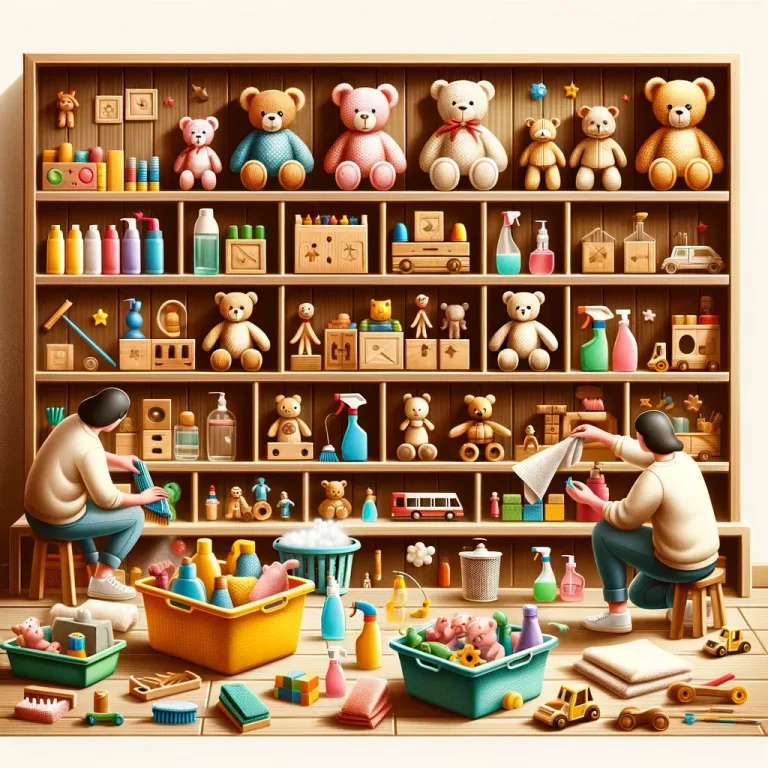
Safe Cleaning Practices
Using child-safe cleaning agents and methods is crucial.
It ensures that the toys are not only clean but also safe for your child to handle and play with.
DIY Cleaning Solutions
To ensure the safety and hygiene of second-hand toys, consider using DIY cleaning solutions.
These can be made with everyday household items like vinegar, baking soda, and essential oils.
Not only are these solutions effective and safe for children, but they also align with the eco-friendly ethos of using second-hand toys.
“Safety First: Always inspect second-hand toys for any damages or potential hazards. Choose toys that are appropriate for your child’s age and development level, and ensure they are cleaned and sanitized before use. Responsible toy shopping protects not only our environment but also the well-being of our children.” – XenReviews
Types of Second-Hand Toys
When selecting second-hand toys, consider the materials they are made from.
Wooden vs. Plastic Toys
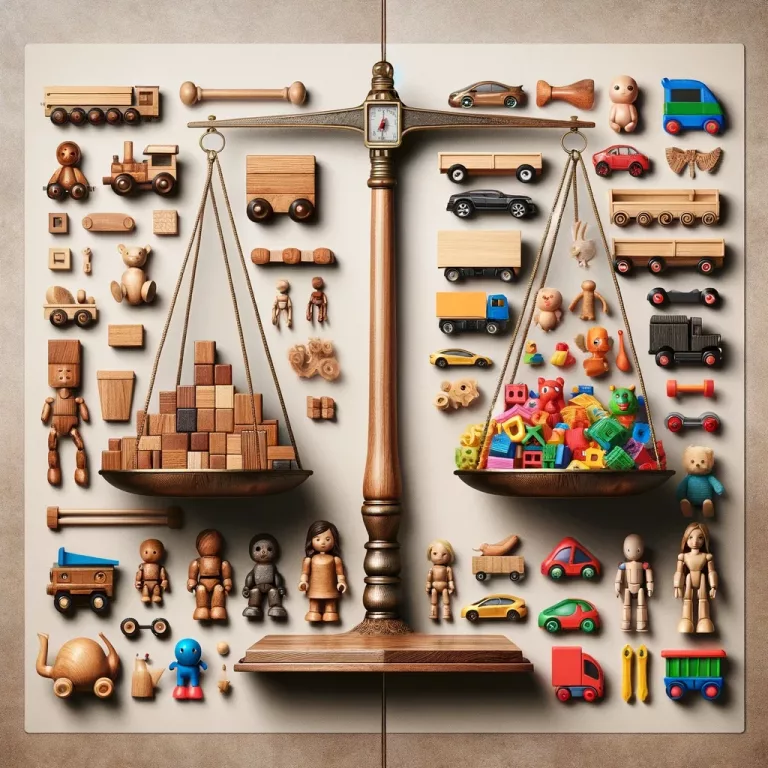
Wooden toys are not only sturdy and easy to clean but also offer an aesthetic and tactile experience for children.
Plastic toys, on the other hand, are easier to sanitize and often more readily available.
Considering Educational and Developmental Toys
Educational and developmental toys play a vital role in a child’s growth. Second-hand shopping can make such toys more accessible and affordable.
Look for toys that encourage learning through play, such as puzzles, building blocks, and board games, and consider their educational value when making your selection.
Sustainability and Environmental Impact
Contributing to a Circular Economy
By choosing second-hand toys, we’re supporting a circular economy, reducing waste, and minimizing our carbon footprint.
Educational Opportunity
This is also an opportunity to educate our children about sustainability.
Through our choices, we can demonstrate the importance of environmental stewardship practically and engagingly.
Understanding the Lifecycle of Toys
It’s important to understand the lifecycle of a toy – from production to disposal.
By choosing second-hand, parents contribute to a more sustainable lifecycle for toys.
This section can delve into how extending the life of toys through reuse not only saves resources but also reduces waste and environmental impact.
Community and Social Aspects
Fostering Community Ties
Participating in community toy exchanges or groups not only helps in finding great toys but also strengthens community bonds.
It’s about being part of a larger movement towards sustainable living.
Promoting Social Responsibility
These actions go beyond just toy shopping; they are a statement of our values and our commitment to a better future for our children and the planet.
Organising Community Events
Encourage parents to take initiative in organising community events like toy swap meets or toy drives.
These events not only provide an opportunity to exchange toys but also help in building a community that values sustainability.
Offering tips on organising such events can empower parents to take active roles in their communities.
Conclusion
In conclusion, embracing second-hand toys is more than just an eco-friendly choice; it’s a lifestyle decision that impacts our children, community, and the environment positively.
As parents, we have the power to make conscious choices that not only benefit our families but also contribute to a healthier, more sustainable world.
Let’s lead by example and embrace second-hand finds for our kids.
FAQs
Involving children in the process of choosing second-hand toys can be both educational and fun. You can turn it into a treasure hunt game where they get to pick their favourite toy, or use it as a learning opportunity to discuss the importance of sustainability. Encourage them to think about the story behind each toy and what adventures it might have had. This not only makes the experience enjoyable but also instills values of eco-consciousness from a young age.
To ensure the longevity of second-hand toys, regular maintenance, and proper storage are key. Teaching children to take care of their toys and store them correctly after use can significantly extend their lifespan. For wooden toys, occasional sanding and resealing might be necessary, while plastic toys should be checked for any signs of wear and tear. Encouraging a culture of care and respect for belongings at home will help keep these toys in good condition for years to come.
From an eco-friendly standpoint, toys that are made of natural materials like wood or bioplastics are preferable for second-hand purchase. These materials are more durable and often easier to repair and maintain. Additionally, toys that encourage open-ended play, like building blocks or simple dolls, can be a great choice as they have timeless appeal and can be enjoyed for generations.
To assess the environmental impact of a second-hand toy, consider the materials it’s made from and its overall durability. Toys made from sustainable materials with less plastic are generally more eco-friendly. Also, evaluate whether the toy has the potential for multiple uses and long life, which reduces the need for frequent replacements. Familiarizing yourself with the brands known for sustainability can also help in making informed decisions.
